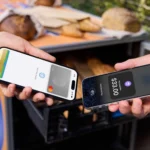Buy Your First Cryptocurrency Safely begins with choosing the right platform and protecting your investment from common security risks.
With the rise of digital assets, buying cryptocurrency has become more accessible—but also more vulnerable to fraud, scams, and technical errors.
This guide cuts through the noise to provide clear, actionable steps for purchasing your first crypto securely.
From selecting a trustworthy exchange to setting up a secure wallet, every move matters. Whether you’re investing $100 or $10,000, understanding how to navigate the process with caution is crucial.
Start your crypto journey on the right foot by following proven safety practices designed for first-time buyers who want confidence and control from day one.
What Is Cryptocurrency?
Cryptocurrency is a form of digital money that uses blockchain technology to ensure secure, decentralized transactions.
Unlike traditional currencies, cryptocurrencies are not controlled by central banks or governments.
Popular Cryptocurrencies for Beginners
| Cryptocurrency | Symbol | Use Case | Market Cap (as of 2025) |
|---|---|---|---|
| Bitcoin | BTC | Digital Gold | High |
| Ethereum | ETH | Smart Contracts, NFTs | High |
| Solana | SOL | High-speed Transactions | Medium |
| Cardano | ADA | Sustainable Blockchain | Medium |
| USDC | USDC | Stablecoin | Medium |
Why Safety Matters When Buying Crypto
Buying crypto without understanding how to secure it can lead to:
- Loss of funds due to hacks or phishing
- Falling for fraudulent schemes
- Sending funds to the wrong wallet address
- Using unregulated platforms
Because crypto transactions are irreversible, one mistake could cost you everything.
ALSO READ: How to Integrate Crypto Payments into Your Business?
Step-by-Step: How to Buy Your First Cryptocurrency

Let’s walk through the entire process.
Choose a Cryptocurrency to Buy
Start with well-known coins like Bitcoin (BTC) or Ethereum (ETH). These are more stable and supported on most platforms.
Select a Reputable Exchange
Some popular beginner-friendly exchanges include:
- Coinbase
- Kraken
- Binance
- Gemini
Make sure the exchange is regulated and has strong security measures.
Create and Verify Your Account
Most exchanges require:
- Email verification
- Government-issued ID upload
- Proof of address
This step is known as KYC (Know Your Customer).
Fund Your Account
You can deposit money using:
- Bank transfer (ACH, SEPA, SWIFT)
- Credit/debit cards (may have higher fees)
- PayPal (only on selected platforms)
Make Your First Purchase
Navigate to the “Buy” section of the exchange, choose your cryptocurrency, enter the amount, and confirm.
Store It Safely
You can keep your crypto:
- On the exchange (hot wallet – less secure)
- In a software wallet (moderate security)
- In a hardware wallet (most secure)
Choosing the Right Cryptocurrency
Before purchasing, ask yourself:
- What is the purpose of this cryptocurrency?
- How long has it been on the market?
- Who are the developers and backers?
- What is the daily trading volume?
Avoid investing in coins solely based on hype or social media buzz.
Selecting a Safe Crypto Exchange
Here are factors to evaluate:
| Factor | Description |
|---|---|
| Security Measures | 2FA, cold storage, encryption protocols |
| Regulatory Compliance | Registered with government bodies (e.g., SEC, FCA) |
| Fees and Charges | Transaction, deposit, and withdrawal fees |
| User Interface | Beginner-friendly design and clear instructions |
| Customer Support | Live chat or fast email response |
How to Set Up a Crypto Wallet

Wallets are digital tools that store your crypto. There are two main types:
Hot Wallets (Connected to the Internet)
- Mobile apps (e.g., Trust Wallet, MetaMask)
- Desktop apps (e.g., Exodus)
Cold Wallets (Offline)
- Hardware wallets like Ledger or Trezor
- Paper wallets (QR code + private keys printed)
Tip: Never store large amounts on hot wallets or exchanges.
Securing Your Investment: Do’s and Don’ts
Do’s
- Enable 2FA (Two-Factor Authentication)
- Back up your wallet seed phrase
- Use strong and unique passwords
- Keep your software updated
Don’ts
- Don’t share your private keys with anyone
- Don’t use public Wi-Fi for transactions
- Don’t click on suspicious links in emails
- Don’t fall for “too good to be true” offers
Common Mistakes First-Time Buyers Make
| Mistake | Why It’s Dangerous |
|---|---|
| Buying because of hype | Prices may crash quickly after viral attention |
| Using an unregulated exchange | Risk of theft, exit scams, or frozen accounts |
| Ignoring transaction fees | High fees can erode small investments |
| Failing to secure wallets | Hackers often target unsecured wallets |
| Losing the recovery seed phrase | Without it, wallet access cannot be restored |
Comparing Centralized vs. Decentralized Exchanges
| Feature | Centralized Exchange (CEX) | Decentralized Exchange (DEX) |
|---|---|---|
| User-friendly | Yes | No (Steeper learning curve) |
| Requires KYC | Yes | No |
| Custodial (holds your crypto) | Yes | No |
| Speed and Liquidity | High | Medium to Low |
| Control of Private Keys | No | Yes |
For beginners, it’s advisable to start with a centralized exchange until you’re comfortable with blockchain operations.
How to Spot Crypto Scams
Unfortunately, the crypto space is rife with scams. Watch out for:
- Ponzi schemes: Promising guaranteed returns
- Phishing sites: Lookalike websites asking for login info
- Pump and dump: Groups artificially inflate a coin’s price
- Fake wallet apps: Especially on third-party app stores
Always verify URLs, use official apps, and follow “trust but verify”.
Understanding Crypto Regulations in Your Country

Every country views cryptocurrency differently:
| Country | Legal Status | Tax Implications | Regulatory Body |
|---|---|---|---|
| USA | Legal (regulated) | Taxable as property | SEC, IRS, FinCEN |
| UK | Legal (regulated) | Taxable as capital gains | FCA |
| India | Legal (taxed) | 30% tax on profits | CBDT, RBI |
| Australia | Legal (regulated) | Taxable under CGT rules | ATO |
| Nigeria | Restricted | Limited legal support | CBN |
Always consult a tax professional before filing crypto-related income.
Bonus Tips for Long-Term Crypto Success
- Diversify – Don’t put all your funds into one coin.
- Research regularly – Follow credible sources like CoinDesk or The Block.
- Set realistic expectations – Volatility is the norm, not the exception.
- Understand the tech – Learn how blockchain and DeFi work to grow your knowledge.
- Join communities – Reddit, Twitter, or Telegram channels can offer helpful insights.
Conclusion
Buying your first cryptocurrency is an exciting milestone, but it’s crucial to approach it with caution and knowledge.
Start by choosing a secure exchange, selecting a well-established cryptocurrency, and storing your digital assets safely.
Avoid common pitfalls by staying informed, using trusted platforms, and prioritizing your security.
As the crypto world evolves, education remains your most valuable asset. Whether you’re investing for profit or exploring the tech, staying safe ensures you can grow confidently in this dynamic digital frontier.







